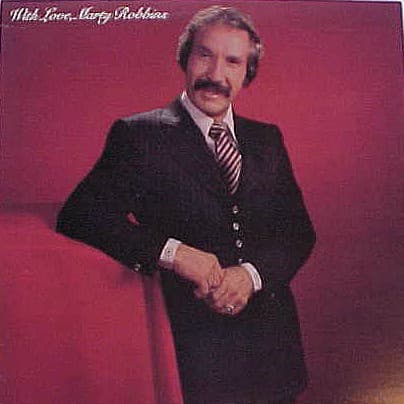
A SONG ABOUT RESTARTING THE HEART WHEN THE BATTERY’S DEAD
In the summer of 1981, as Marty Robbins entered the final chapter of his extraordinary career, he released Jumper Cable Man, a song issued on the compilation album The Legend. While the song did not become one of his major chart‑toppers, it stands as a vivid late‑period piece by one of country music’s great voices, bridging his classic storytelling instincts with a more playful metaphor for renewal.
“Marty Robbins,” born Martin David Robinson in 1925, built a long career through Western ballads and deeply emotional country songs. By 1981 he was a seasoned artist with a catalogue of over 500 songs. Though “Jumper Cable Man” may not have reached the heights of his signature “El Paso” or “Devil Woman,” it occupies a special place as part of his late‑career reflection and continued creative spark.
In “Jumper Cable Man,” Robbins adopts the imagery of a car stranded on the roadside—battery dead, engine silent—and transforms that situation into a metaphor for emotional breakdown, recovery, and connection. The narrator positions himself in the role of the jumper‑cable wielding friend or lover, reconnecting terminals, sparking current, and helping the vehicle—and by extension the person—come back to life. This is more than a novelty: it’s Robbins’s signature ability to take everyday Americana and turn it into a human story of hope.
Musically the track leans on familiar country instrumentation—a steady rhythm, gentle steel guitar over a warm mid‑tempo groove—and Robbins’s voice, by then rich with lived experience, carries a sincerity that undercuts any whimsy in the metaphor. The listener hears a man who has seen a lot, and who still believes in revival. The lyric’s core is about one person offering help when another is stuck, discouraged, powerless. The imagery of “jumper cables” becomes a symbol of emotional re‑connection: the lifeline between the world of isolation and the spark of renewed movement.
Lyrically Robbins doesn’t fixate on grand drama or epic heartbreak; instead he stays grounded. The scene may begin by a car that won’t start—but it quickly becomes about the person whose spirit won’t either. The narrator engages in the practical act of hooking up the cables—and with that act enters a subtle dialogue of “I’ve got you,” “We’ll get you going,” “Don’t stay in the dark.” What makes it memorable is Robbins turning a mechanical scenario into a quietly human one. It echoes his earliest ballads where horses and guns and deserts stood in for human longing and redemption, but here the setting is more suburban, the crisis less life‑or‑death, yet the emotional stakes remain unmistakably Robbins‑ian.
In the broader context of his late career, “Jumper Cable Man” shows Robbins still looking outward, still crafting songs that address connection, support, and revival. After decades of singing about outlaws, gunfighters, lonely cowboys and wandering hearts, here he sings about the everyday rescuer, the one who stops when someone’s stranded—not in the desert, but on the roadside of life. That shift feels poignant: the man who once told tales of the lone rider now offers the jumper cables. It is a small, but telling moment of empathy.
Though chart data for “Jumper Cable Man” is limited—discographies list the single released July 19, 1981, under Columbia and appearing on The Legend album. what matters most is how the song wraps Robbins’s maturity, voice and craftsmanship in a metaphor that is tender, real, and quietly affirming. For longtime fans, it’s a late gem; for new listeners, a window into Robbins’s enduring ability to convey the human condition via simple, evocative imagery.
In listening now, we hear not only a skilled singer‑songwriter but a storyteller reflecting on what it means to keep going, to hit the starter again, to find the spark when the power’s gone out. The “Jumper Cable Man” is not just hauling his friend out of a ditch—it’s offering a connection, a resurgence, a second chance. And in that sense it may be one of Robbins’s most heartfelt gestures: a final gift from a veteran soul who knows that even when the engine’s silent, there’s still a shift to engage.